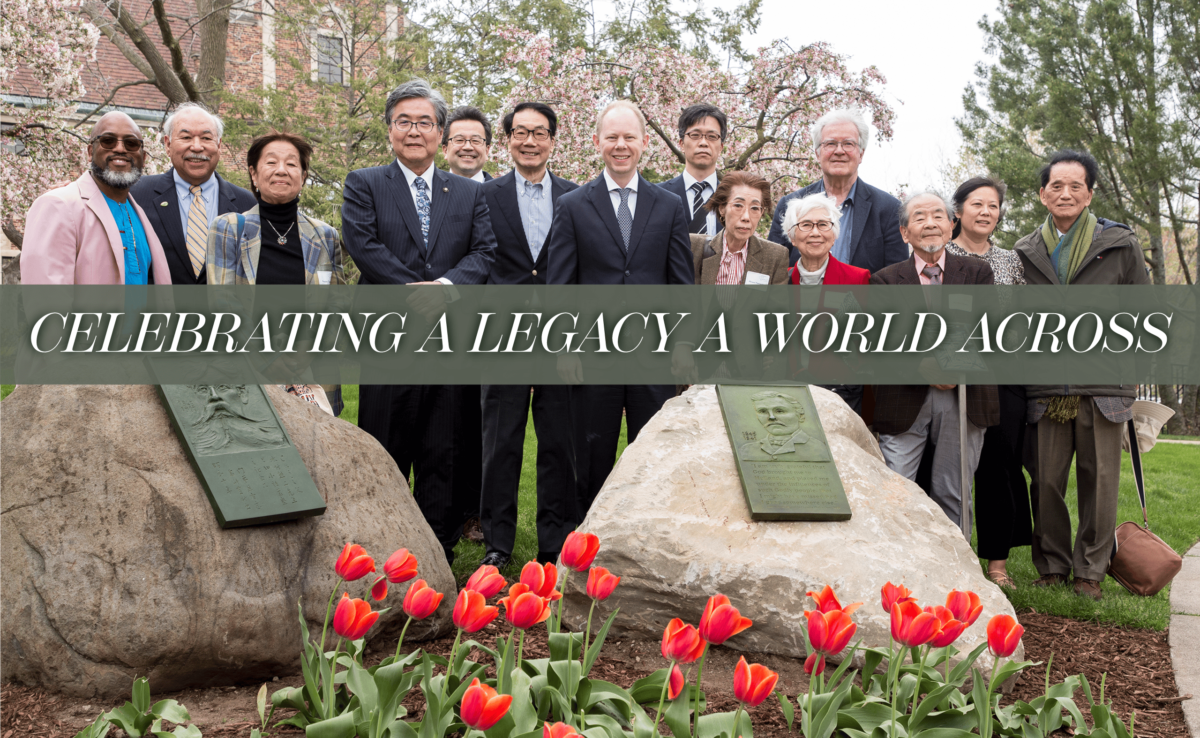Celebrating a Legacy a World Across
When they arrived at Hope from Japan in 1871, Kumaji Kimura and Motoichiro Ohgimi — who became the college’s first international graduates — would have trod the campus near the main entrance of Van Vleck Hall. The commemorative installation completed on the same location this spring celebrates the lasting impact that they and that moment have had on both Hope and their homeland across the 153 years since.
The site features bronze bas reliefs that depict each of the two men. The relief of Kimura was donated to the college by Komoro City of Japan and installed in 2021. The relief of Ohgimi was commissioned by Hope and unveiled during a ceremony on Saturday, April 27, that included Komoro City’s mayor, Toshihiro Koizumi.
Philip Phelps had met the two men in New York while he was on a fundraising tour of the East Coast. As members of samurai families, they had been on the losing side at the time of the Meiji Restoration in 1868, and had come to the U.S. in search of better lives — but were without funds, plans or even fluency in English.
“I am truly grateful that God brought me to Holland, and placed me under the influences of such Godly people, that I might have missed had I gone somewhere else.”
They initially enrolled in the Holland Academy, a high school operated by Hope at the time, which another student from Japan was already attending. All three converted to Christianity, and were baptized at Hope Church in Holland in 1872. The other Japanese student — Ryozo Tsugawa — returned to Japan after completing his studies at the academy, but Kimura and Ohgimi enrolled at the college. After graduating from Hope in 1879, they attended New Brunswick Theological Seminary in New Jersey, and upon graduating from the seminary in 1882 became ordained Reformed Church ministers and returned to Japan.
Kimura (1845-1927) was a pastor at various churches and then cofounded the Meiji Women’s Academy in Tokyo with his wife, Toko Kimura, and also served on the faculty at the school. He also founded a private school — Komoro Gijuku — in Komoro City, the building for which was modeled after Van Vleck Hall; and subsequently returned to the pastorate, serving in Nagano for several years.
Ohgimi (1845-1941) was involved in the founding of, and taught at, Meiji Gakuin University, which was created through the merger of three schools; was principal of Steele Memorial Academy; served as a pastor; and established an educational facility for the blind. He also helped translate the New Testament into Japanese, and wrote a New Testament Greek-Japanese dictionary.
For more information, and highlights of Kumaji Kimura’s and Motoichiro Ohgimi’s time at Hope and careers, please visit: hope.edu/japanlegacy

